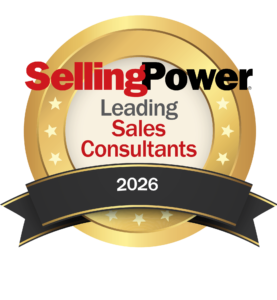Power to Influence: How Sales Enablement Leaders Can Impact Business Outcomes
While working with sales teams, sales enablement leaders may often feel they lack the ability to impact the sales outcomes the C-suite wants to see. Though they use all the right sales enablement tools and processes – including training methodologies and coaching – it can seem like their hard work doesn’t correlate well to the success of their sales teams.
Sales enablement professionals often ask themselves, “What can I do as an influencer?” This is because they rarely feel they have the authority to make change unless they have executive buy-in. And it’s true that, without executive sponsorship and support from the C-suite, many enablement initiatives will fail.
What many enablement leaders don’t realize is that they may actually have a lot of power to influence the strategy before they execute the processes and programs – perhaps just not in ways they realize.
Take, for instance, a revamping of company culture and growth through a sales enablement program. Again, these efforts usually involve some new tools, a set of processes about how to roll out a program, some support for the idea of enabling sales teams, and perhaps a few individuals tasked with making things happen. What is missing is a strategy that aligns with the objectives of the C-suite – long before any program roll-out happens.
What’s Missing?
If sales enablement leaders think beyond processes and programs – and get involved in influencing and setting strategy – they have a chance at having a far larger impact on business outcomes.
Here is a simple two-step process to enact change.
1. Start with the Why
As we all know, the C-suite mandates the goals. So, in an effort to ultimately help the organization increase revenue and achieve alignment on KPIs, a sales enablement leader may end up reverting to a playbook of tactics, such as aggregating all resources including tribal knowledge and mind share.
Here’s how that usually happens: The CEO turns to the sales leader and says: “Make sure our sales organization hits our number.” Then, the head of sales turns to sales enablement and says, “Make sure we can hit our number.”
Part of the value of the sales enablement professional is as a liaison between the sales organization and other lines of business. To connect the dots between the stated goal and the execution of programs, sales enablement is often tasked with filling in the gaps that lie between what sales needs, versus what sales wants.
For example, in a Fortune 500 company, the salespeople want a better communication tool that aggregates email, text and voice. What they need (according to management) is a learning process that reinforces sales training that can be tracked to an increase in more services having been sold.
Before building (or even becoming!) the bridge between needs and wants in their sales organization, sales enablement must conduct an internal assessment to dive deeper into what works best – and what does not work at all. This means asking questions like:
- Do we know if our new reps know how to engage prospects in the right manner – whether in person or over the phone?
- Is the onboarding process having measurably impacting results?
- Are sales reps closing deals faster? If not, what’s standing in their way? Do we really know?
- How are we selling value versus feature and functionality?
One of the fastest way’s sales enablement can endear themselves to salespeople is by removing obstacles like ineffective or irrelevant enablement processes and content that might be inhibiting their ability to “hit their number.”
2. Leverage Data to Drive Change
In the words of W. Edwards Deming, the famous American engineer and mathematical physicist, “Without data, you’re just another person with an opinion.” Data can not only show how sales reps are interacting with content; it can tie success (or lack thereof) to outcomes. This, in turn, demonstrates the areas that require ongoing learning.
Successful sales organizations take a data-driven mindset when working to influence meaningful change. They adopt strategies that include using metrics to evaluate results by leveraging data to inform the steps to take for continuous improvement.
When data girds the process, it allows enablement to set worthy goals, assign metrics associated with those goals, and measure learning outcomes that can be correlated with performance outcomes. This is made possible with enablement platforms that move beyond the traditional training programs L&D and HR teams have been relying on for years.
Sales enablement can, in fact, affect sales strategy. In the words of Harvard’s Michael Porter, “The essence of strategy is choosing what not to do.” With the inexorably accelerating pace of change, this may be the simplest, yet most powerful, step you can take.
Pat Lynch is vice president, enablement excellence and innovation, at MindTickle.com.
Get our Enewsletter
Get the latest sales leadership insight, strategies, and best practices delivered weekly to your inbox.
Sign up NOW →